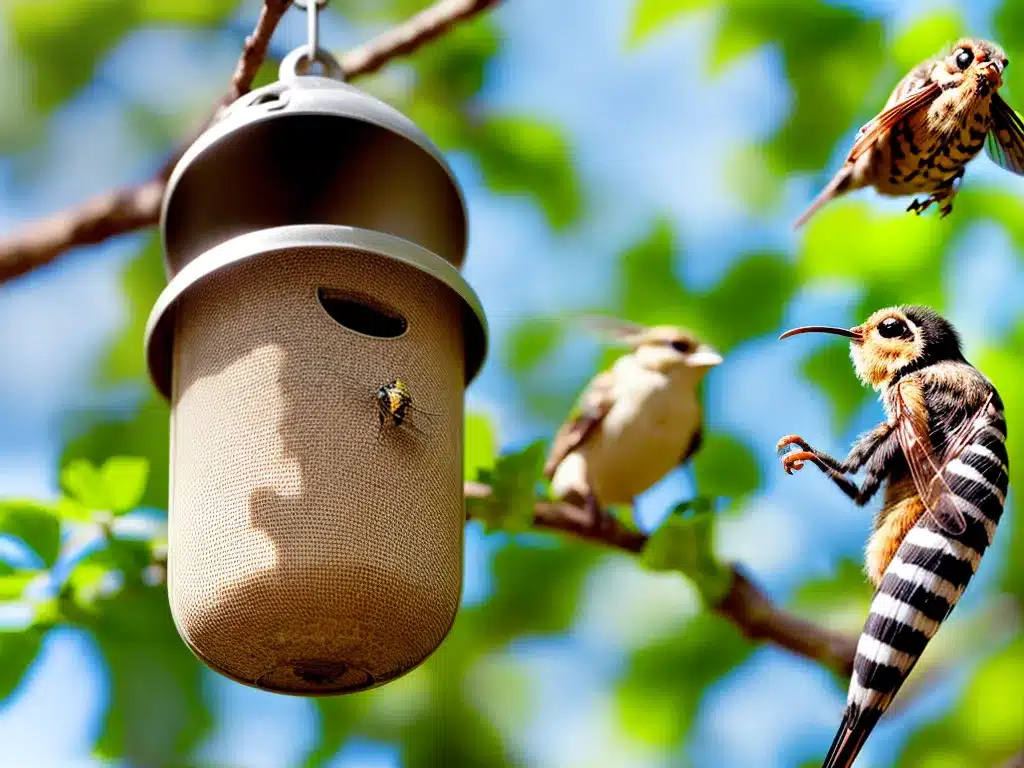Why Remove Nests?
As winter ends and spring begins, birds and wasps become more active and begin building nests. While observing nature can be enjoyable, nests built on or near your home can cause some problems:
- Nesting materials like straw, mud, and twigs can damage your home’s exterior or clog gutters.
- Bird and wasp droppings can stain walls and outdoor furniture.
- Some bird and wasp species can be aggressive in defending their nest. This poses a risk to people and pets outdoors.
- Large nests are unsightly and decrease your home’s curb appeal.
For these reasons, it’s often best to remove nests from areas around your home. When done properly, this protects your home while allowing birds and wasps to nest safely in other locations.
When to Remove Nests
The best time to remove nests is early spring before eggs or young are present. Adult birds and wasps are less likely to rebuild nests this time of year. Here are tips on timing:
- Birds – Remove nests after spring migration (February – April) but before nesting begins (May – July).
- Wasps – Remove nests on the first warm days when wasps come out of hibernation (late February – early March).
Removing nests later when eggs or young are present risks separating parents from their offspring. It’s best to avoid this scenario if possible by acting early.
Removing Bird Nests
Here are some methods to safely remove bird nests:
Wear Protective Gear
Wear thick gloves, long sleeves, pants, and eye protection. Angry birds may swoop, claw, or peck when their nest is disturbed.
Use Tools to Reach High Nests
Use a ladder, pole, or pressure washer to access nests on high surfaces like roof eaves, gutters, and chimneys. Carefully knock down and remove nesting material.
Seal Entry Points
Block areas where birds entered by sealing holes, installing netting, or adding rougher surfaces like metal spikes. Discourage future nest rebuilding.
Clean the Area
Remove all traces of the nest and droppings on walls or outdoor furniture using a stiff brush, putty knife, and mild detergent. Rinse afterwards.
Removing Wasp Nests
Here are some effective and safe methods to remove wasp nests:
Spray Nest with Insecticide
Apply heavy duty wasp and hornet spray into the nest entrance. This quickly kills wasps and allows the nest to be safely removed once vacant.
Remove Nest After Dark
Wasps are less active at night. Under cover of darkness, knock down the nest with a broom then seal it tightly in a plastic bag for disposal.
Call a Professional
For large hives or nests in hard to reach spots, call a pest control professional. They have industrial vacuum tools to quickly suck up nest contents.
Seal Entry Points
After removing a nest, seal cracks and holes in walls, roofs, or overhangs so wasps can’t re-enter and rebuild. Caulk, wood putty, steel wool, or other sealing materials can be used.
Prevent Nest Rebuilding
To discourage birds and wasps from reusing old nest sites:
- Install bird netting, rubber snake decoys, or reflective aluminum tape near previous nests.
- Prune back tree branches and shrubs near the home.
- Use scent repellents containing mint, garlic, or lemon oils.
- Seal gaps and holes with caulk early before nesting begins.
With some preparation and the right tools, you can handle nest removal yourself and keep your home pest-free this spring. Just remember to act early before nests become active!







